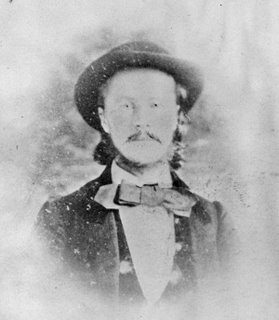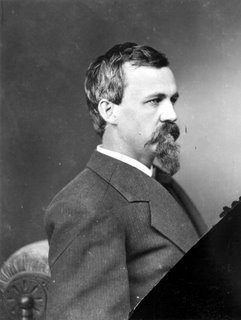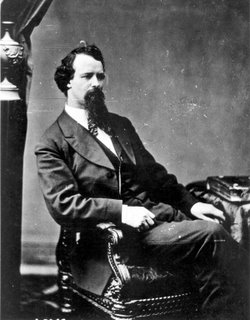
I am not sure what to do with the John Q. Dickinson material I have gathered. In any event, here's a list of writings and letters which I have found:
J.Q. Dickinson to "Dear Mother," Tallahassee, FL., Aug. 13, 1868 (UVT Library)
A.H. Jackson to J.Q. Dickinson, ___, Sept. _, 1868 (Freedmen's Bureau Records)
J.Q. Dickinson to A.H. Jackson, Marianna, Fl., Sept. 15, 1868 (FB Records)
J.Q. Dickinson to A.H. Jackson, Marianna, Fl., Sept. 17, 1868 (FB Records)
J.Q. Dickinson to A.H. Jackson, Marianna, Fl., Oct. 1, 1868 (FB Records)
J.Q. Dickinson to Rutland
Herald (pub. 4/15/69) - titled "A Letter from Florida" subtitled "The Murder of Dr. Finlayson, dated Marianna, Jackson Co. , Florida April 5, 1869.
J.Q.D. to "Dear Father", Marianna, Fla, April 11, 1869 (UVT Library)
Malachi Martin to J.Q. Dickinson, State Penitentiary, Fla. Aug. 10, 1869 (fr. Benson, VT. Historical Society)
JQD "Memoranda and Occurences": Sept. 28 - Oct. 26, 1869 (Kaplan Collection)
J.Q. Dickinson to C.M. Hamilton, Marianna, Sept. 30, 1869 (Congress Hearings)
J.Q. Dickinson to C.M. Hamilton, Marianna, Oct. 3, 1869 (Congress Hearings)
JQD: Fleishman Affadivits, Oct. 4, 1869 (Kaplan Collection)
J.Q. Dickinson to C.M. Hamilton, Marianna, Oct. 7, 1869 (Congress Hearings)
J.Q. Dickinson to C.M. Hamilton, Marianna, Oct. 11, 1869 (Congress Hearings)
C.M. Hamiton to J.Q. Dickinson, Washington, Dec. 29, 1869 or 1870 (Kaplan Collection)
J.Q. Dickinson to G. Gile, Marianna, Florida, Feb. 24, 1870 (FB Records)
W.J. Purman to J.Q. Dickinson, Tallahassee, Fla. Oct. 5, 1870 (UVT Library).
J.M. Hawks to J.Q. Dickinson , Pensacola, Fl., Nov. 25, 1870 (UVT Library)
Benj. Thompson to J.Q. Dickinson, Ship Peruvian, Savannah, Dec. 2, 1870 (UVT Library)
Laurie (?) Thompson to J.Q. Dickinson "
Hart Collins (?) to J.Q. Dickinson, Orange Hill (?), Fl, Dec. 9, 1870 (UVT Library)
Benj. Thompson to J.Q. Dickinson, Ship Peruvian, Savannah, Dec. 25, 1870 (UVT Library)
J.C. Gibbs to J.Q. Dickinson, Tallahassee, Feb. 14, 1871 (UVT Library)
J.Q. Dickinson to J.C. Gibbs, Marianna, Feb. 23, 1871 (Congress. Hearings)
W.J. Purman to J.Q. Dickinson, Tallahassee, Fla., March 10, 1871 (UVT Libary)
OTHER RELATED LETTERS
A.J. Dickinson to "Dear Mother," Marianna Post Office, April 4, 1871 [mistakenly dated by A.J., should be May 4, 1871] (UVT Library)
W.J. Purman to Isaac Dickinson, Tallahassee, April 8, 1871 (private collection)
W.J. Purman to Isaac Dickinson, Tallahassee, April 17, 1871 (UVT Library)
D.B. Peck to Isaac Dickinson & Family, Washington DC, April 17, 1871 (UVT Library)
W. Chapman to I. Dickinson, Marianna, Jackson Co., Florida, April 29, 1871 (UVT Library)
P.R. Sherwood to Mrs. Dickinson, Knox Co. Ohio, April 2_, 1871 (UVT Library)
Isaac Dickinson to W.H. Milton, Benson, Vt., Sept. __, 1874 (UVT Library)
Isaac Dickison to Mr. Chapman, Benson, Vt., Feb. 13, 1875 (UVT Library)
W.H. Milton to Isaac Dickinson, Marianna, Fl., April 15, 1879 (UVT Library)
SEE ALSO: Wartime letters from JQD to Rutland
Herald dated March 13, April 5, April 27, May 1, July 15, 1862; July 4, 1863; Aug. 20, 1864 reprinted in Donald H. Wickman,
Letters to Vermont from her Civil War soldier correspondents to home press (Bennington, Vt., 1998), vol. II;
manuscript diary, 88 pages, March 10 - May 6, 1862 in possession of UVT Library;
J.Q. Dickinson to "Dear Uncle", Baton Rouge, LA, Aug. 10, 1862 (Navarro College, Texas).
J.Q. Dickinson to "Dear Mother," Metropolitan Hotel, NY, March 11, 1862 (BensonHS)
J.Q. Dickinson to "Dear Mother," Ship Island, April 4, 1862 (BHS)
J.Q. Dickinson to Dugald Stewart, Near Carrollton, La., Sept. 1, 1862 (Jeffrey D. Marshall, ed.,
A War of the People: Vermont Civil War Letters.)
J.Q. Dickinson to "Dear Father," Fort Pickens, La., Dec. 3, 1863 (BHS)
J.Q. Dickinson to "Dear Father," Barnacas, La. May 17, 1864 (BHS)
J.Q. Dickinson to "Dear Father," New Orleans, Jan. 14, 1865 (BHS)
J.Q. Dickinson to "Dear Father," New Orleans, Oct. 18, 1865 (UVT Library)
[updated April 21, 2010]
[photo: http://www.vermontcivilwar.org/units/7/jqd.php ]











